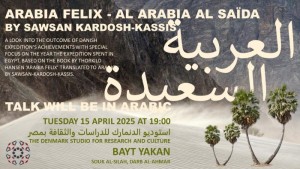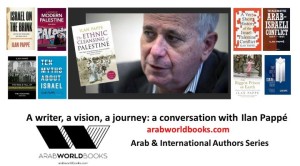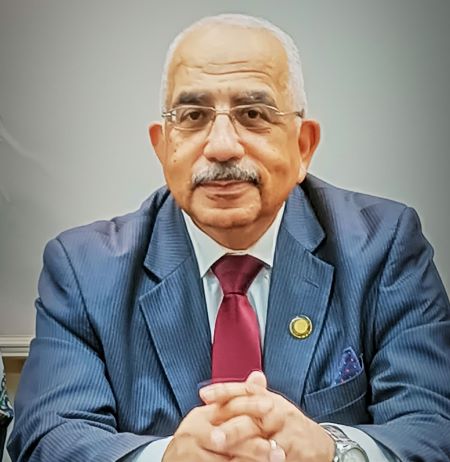Reading the famous series Harry Potter by British author J. K. Roling, one cannot but notice the Eastern influence in her celebrated work.
Rolling, in the first episode of the Harry Potter series uses the idea of the Philosopher's Stone which, according to myth, possesses magical powers. It can transfer metal into gold, and produce an elixir that makes a man immortal.
J. K. Roling's first episode revolves around this idea. She used Harry Potter, the talented child whose parents were killed by the evil sorcerer and who joined Hugwoths school of sorcery, as a brilliant tool to confront the symbols of black magic and defeat the villains.
Harry Potter was born to sorcerer parents, but good ones as other sorcerers witnessed, a virtue their only child inherited. With that heritage, Harry Potter and his friends Ron and Hermion, were eager to thwart the villains' plans to put their hands on the Philosopher's Stone.
Here, we do not want to talk about the continuing impact of the Harry Potter series, and its tremendous popularity among a wide spectrum of readers bridging many generations, or the way the series has proliferated throughout the world whether in English or through translations, nor of the fame and money achieved by the author. Nevertheless, it is worth mentioning that Roling managed to take the reader on a trip though human emotions, especially in the world of sorcerers and witches that added an extra dimension of suspense and obscurity that readers enjoy. But let us discuss the idea of the Philosopher's Stone.
According to the Concise Arabic Encyclopedia, Alexandria was the home of the Philosopher�s Stone and the Elixir of Immortality that transform base metals into precious ones, namely gold, and brings back youth. This old art originated in Egypt, others say in China, in the third or fifth century BC. It is associated with astrology and magic. It was called old chemistry, or alchemy, and reached the Arabs in the eighth century to stay with them until the 12th century. It was then transferred to Europe through the translation of the works of famous Arab chemists like Khaled bin Yazid, Jaber bin Hayan, ThouNoon AL-Masri, Al-Tughraei, Zakariya Al-Razi, and others. Symbolism characterized this science-art throughout the Middle Ages, and it was shrouded in secrecy.
Jaber bin Hayan was the first Arab scientist to practice chemistry. He lived in Baghdad and Kufa at the end of the eighth and beginning of the ninth centuries. His work, which exceeded 80 books, was translated into Latin, and considered to be the most important treatise on chemistry at the time. He wrote about metals, their oxides and compounds, nitric, sulfuric, vinegaric acids and alkaline, and chemical processes such as filtering and purification through crystallization, and distillation which were influential in developing chemistry and introduced the ideas of experimentation and the use of laboratories. Jaber bin Hayan recommended in his books that �researchers� should be precise and follow strict rules in their experiments and be patient during their conduct. He believed in the theory of transferring base metals into gold and that mercury and sulfur are the two base elements in nature.
Parts of his work was translated from Latin into English in 1678. Holmirad edited these translations and wrote a new introduction to them published in 1928. Later, Paul Kraus published his letters.
It might be surprising to know that Prince Khalid bin Yazid bin Muawiya bin Abi Sufian abandoned the caliph's throne to engage in the learning of chemistry, also known as the science of the artisans. The Concise Arabic Encyclopedia says that �Khalid bin Yazid bin Muawiya al-Amawi (d. 704), the wise-man of Quraish and its scientist, practiced chemistry, medicine and astrology, mastered them, and wrote many treatises in these fields. He received homage as caliph after the death of his father, which he accepted, but left it after three months to go back to his studies. It is reported that he was the first to produce Arabic translations from other languages, and ordered the invitation of Greek philosophers who lived in Egypt, to translate books from Greek and Coptic into Arabic, which they did in medicine astrology and chemistry.
He was a poet. It is interesting to note that Khalid had a poem on chemistry. Al-Jahidh, in his book Al-Bayan wa A-Tabieen, says �Khalid bin Yazid bin Muawiya was a debater and poet, with universal knowledge, wise opinions, and prolific writings. He was the first to order the translation of the books of astrology, medicine and chemistry.�
Ibn AL-Nadim, the author of Fahrast, the Index, says �Ibn Ishaq, who was occupied by reporting the old contribution of the chemist artisans, said that Khalid bin Yazid bin Muawiya, was a debater, a poet, a man of opinion, he was the first to commission books on medicine, astrology and chemistry to be translated, and was generous. It is said that when asked �why do you spend all your time practicing chemistry?' he answered �I wanted to enrich my colleagues and brothers�.�
The rulers of Islam were fond of chemistry, up to the extent that some sacrificed their lives in the quest of more knowledge in this field. Yahya bin Tamim Al-Muiz bin Badis was hugely interested in chemistry, named �the science of Jabir�. This cost him his life as three of his younger brothers, who had been in exile since childhood, came back and said that they were experts in chemistry. He asked them to reveal their secrets, and they asked for a closed meeting. He met them with his minister and a trusted servant. The three brothers brought lead to convert to gold, and started working. They chose the right moment and killed the minister and the servant with their daggers, wounding the ruler and reminding him of their exile while he enjoyed the throne alone. Yahya suffered from his wounds, and later died.
Were these stories present in Roling�s mind, or in her sub-conscience, when she wrote Harry Potter?
Did Eastern heritage, ancient Egyptian, Babylonian, Gilgamesh, Qarun, Harot and Marot, Kalila wa Dumna and the One Thousand and One Nights make up the invisible background to Roling�s stories?
In the first part of the series, the author, through Hermion, states that there are many reports of the Philosopher's Stone across different historical era, but the only genuine and existing stone is the one of �Nicolas Flamil�, the great chemist, and lover of opera �who celebrated his 165th birthday last year�, and who lived a happy and quiet life with his wife Berynil (658 years) in Devon.
Therefore, Flamil was the main beneficiary, and probably the last, of the existence of the Philosopher's Stone that Khalid bin Yazid wanted his colleagues and brothers to benefit from. The Stone, has reached Filamil, through the novel of Roling, and it is important to keep it safe and shrouded in mystery and puzzles.
�Did you see the dog guarding the Philosopher's Stone. I think that Filamil discovered that someone is trying to steel it and asked Dumboldor (the headteacher of Hugworts school of wizardry) to move it from Greengots (wizards� bank) and keep it safe�, said Hermion.
�A stone that transforms metal into gold? And stops people from dying? No doubt that Snap wants to get it! Anybody wants to have it!� said Harry.
�This is why we couldn�t find it in the new books because it is 665 years old� said Ron.
This is how the Philosopher's Stone's existence came to life in Roling�s novel, emanating from the imaginations of the Arab scientists of old, especially those who practiced alchemy and who spoke about their art in terms shrouded in mystery, symbols and magic. Roling did an excellent job in using these ideas, fascinating children and adults alike with her broad imagination and her impressive knowledge of the Middle Ages and antiquity, especially Egyptian, Arabic and Islamic history, or the history of the East in general, although she never mentioned it in the first part of the series. In fact she did not need to. The melting of sources and references in the structure of the novel is an indication of the professionalism of the author.
We can also say that the author benefited greatly from the stories of Moses and his encounter with the Egyptian magicians who converted their wands into snakes and serpents as stated in the Holy Quran. It is difficult to judge whether Roling read the Holy Quran, however similar stories exist in the Old and New Testaments. But we may see that the usage and training to use the magic wands are a manifestation of Eastern influence through Eastern myths and the three major religions.
Al-Mawrid Electronic Encyclopedia defines wizardry as �the art which enables its performer to do certain acts beyond usual human ability, using supernatural powers, or using hidden powers in nature. Wizardry was known to humanity since the beginning of time, and was used by some to control others or nature, to heal from diseases, and to exorcise evil spirits. Up to this moment, African tribes perform dancing parties to exorcise spirits, wearing strange-looking cloths and masks that scare people, in an effort to scare ghosts away and force them to leave someone�s body. Wizardry mixes strongly with religion to the extent that it becomes difficult to distinguish one from the other in the case of these societies. Wizardry, or magic, also means the art of tricking an audience in things that are supposed to take place through tricks, especially hand tricks.�
Wizardry was mentioned in Holy Quran 23 times, a wizard 12 times, wizards 8 times, plus many words that are derived from magic and wizardry. Surah Al-Namil (Ants), Ayah [27.13] of the Holy Quran states: �So when Our clear signs came to them, they said: This is clear enchantment.� Surah Taha, Ayah [20.69] states: �And cast down what is in your right hand; it shall devour what they have wrought; they have wrought only the plan of a magician, and the magician shall not be successful wheresoever he may come from.�
Magic is close to wizardry, and the art that the ancient Egyptians excelled in. Al-Mawrid Encyclopedia states that �magic is an art of deceiving an audience through the ability of a magician to perform anything that is impossible. The work of magic is not limited to simple tricks such as making handkerchiefs disappear or card tricks. But it demonstrates the ability of a magician to set himself free of chains, or saw off the heads of beautiful women and then bring them back to life. The magician uses his ability to perform fast tricks, and to some extent manipulates the psychology of the audience, and also uses hidden tools that help him to do his tricks. Magic goes back to ancient Egyptian times. The Church fought magicians in Medieval times on the pretext of being agents to Satan."
We notice that Roling uses magic wands extensively in the Harry Potter series, and those wands are graded in their abilities, shapes and colors and also the kind of wood that they are made of. One of these wands is the �Nimbus 2000� wand given by Mrs. M. McCongil to Harry Potter when he shows brilliant advancing in his training and when she made sure that he had inherited the talent of his parents.
The magic wand is mentioned many times in the story of Moses with the Egyptian magicians. Surah Aaraf (The Elevated Places), Ayah [7.107] of the Holy Quran states �So he threw his rod, then lo! it was a clear serpent.� Surah Taha, Ayah [20.66] states �He said: Nay! cast down. then lo! their cords and their rods-- it was imaged to him on account of their magic as if they were running.�Also, Surah AL-Shuraa (The Poets), Ayah [26.44] states �So they cast down their cords and their rods and said: By Pharaoh�s power, we shall most surely be victorious.� And Surah Al-Namil, Ayah [27.10] states �And cast down your staff. So when he saw it in motion as if it were a serpent, he turned back retreating and did not return: O Musa! fear not; surely the apostles shall not fear in My presence.�
There is no doubt that there is strong connection between wizardry and magic wands that change into snakes and serpents. Roling realized the importance of the presence of serpents, owls, frogs, mice, spiders, blood and other things in her creation of the mythical world of Harry Potter.
Despite the fact that Nicolas Flamil succeeded in using the Philosopher's Stone to extend his life and his wife�s to 665 years, we see that Master Dimpldor destroys the stone, thinking that it is better for everyone, especially after the terrible struggle that took place between wizards to own the stone. That struggle that resulted previously in the death of Harry Potter�s parents, and caused the scar in Harry Potter�s face that become his mark. It is a struggle between good and evil, the good and the wicked in the wizard world.
To conclude, we may ask: did the Arab and Muslim alchemists and scientists fail to find the Philosopher's Stone that transforms metal into gold, and produces the Elixir of Immortality? Or did they managed to discover it, but thought that it might be the cause of a struggle between the wizards and lay people, or the good and the wicked among the wizards themselves? A situation which might transform life into hell instead of making it long, happy and prosperous as the philosophers and poets had dreamt? This was also the conclusion Roling opted for in the first part of the Harry Potter series: to destroy the Philosopher's Stone at the hands of Dimpldore after agreeing with Nicolas Falmil about this course of action.
The Eastern Influence in Harry Potter
By: Ahmed Shablool - on: Thursday 16 November 2017 - Genre: Essays
Upcoming Events

Arabia Felix - Alarabia Alsaida in Bayt Yakan
April 15, 2025
Arabia Felix by Thorkild Hansen, and translated by...

A writer, a vision, a journey: a conversation with Professor Ilan Pappe
March 15, 2025
This event took place on 15 March, 2025 . You may...

مسافر يبحث عن ماء
February 17, 2025
تقيم نقابة اتحاد كتاب مصرشعبة أدب الرحلات تحت رعاي...

Online discussion of The Vegetarian by Han Kang Nobel Prize winner 2024
November 08, 2024
This discussion of Han Kang’s The Vegetarian...
